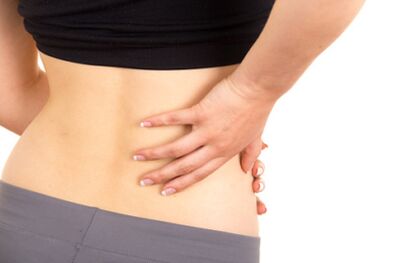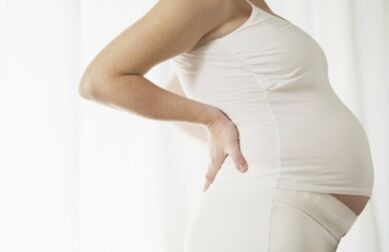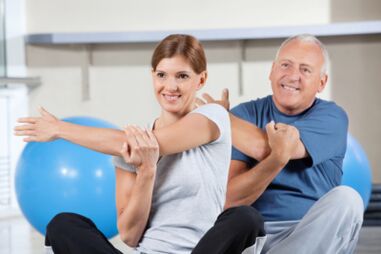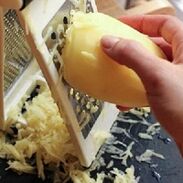
Many people ask this question due to the fact that it is the lower back that is often subjected to extreme loads for a person's life.In many cases, this is what causes the appearance of osteocondrosis or aggravates its condition.If you start this disease, it can become a serious problem, so it is so important to conduct diagnostics in time and start treatment.In the article you will find everything that this disease is, what are its causes and symptoms, as well as the treatment of the disease.
Reasons
The main causes of lumbar osteochondrosis are:
- flat feet;
- scoliosis;
- mechanical injuries of the lower back;
- metabolic violation;
- sedentary lifestyle;
- obesity;
- violation of the balance of water salt;
- improper nutrition;
- pregnancy.
Important!The reasons for the appearance of problems with the lumbar department have not been studied until the end.This means that in a specific situation it can be difficult to determine what has caused exactly the appearance of the disease.
Symptoms
There are several subspecies of osteochondrosis, therefore the symptoms of the disease may vary slightly.Subsequently, we will analyze every subspecies and characteristic signs.
Polysegment - What is it?
Polish osteochondosis (PSO) is a defeat of several segments of the spine at the same timeDegenerative processes.
Signs:
- Strong pain in the lumbar region.
- With clear movements or attempts to lift something heavy, they appear "shots".
- It becomes difficult to perform the usual motor shares.
Ledge
Protection is one of the phases of osteocondrosis, during which the elasticity and height of the intervertebral discs decrease.For this reason, cartilage begins to gradually protrude beyond the boundaries of the vertebrae.
Signs:
- Sewing the pain that may appear not only when it moves, but also at rest;
- Easy numbness of the lower limbs;
- Relative or redness of the skin of the lower limbs;
- the appearance of weakness in the legs;
- Long sitting or standing leads to pulling the pain, which disappears after the change of posture;
- When you raise heavy things, you can give acute pain to the pelvis and hips.
Hernia L5-S1 intervertebral disc
The appearance of an hernia is the last phase of osteochondosis.This problem is characterized by a strong protrusion and loss of the intervertebral disc, which does not resist the pressure of the vertebrae that surrounds it.

Signs:
- Pain syndrome, which applies not only to the lower back, but also to one of the lower ends.
- The appearance of pain in one of the buttocks and a leg correlated to it.
- Strong numbness or tingling at the lower ends.
- Strengthen numbness and pain in a vertical position and during movement.
- Reduce the breadth of the movements in the lower back.
- Sail foot syndrome.
- Change the pace and posture.
- Strong pale or redness of the skin in the lower back and on the legs.
- In rare cases, they arise urinary or feces.
Psychosomatic in women and men
Psychosomatic disorders appear due to emotional injuries.The signs of this disorder depend on the stadium of the osteochondrosis and are not different from those previously described.
Important!When a psychosomatic disorder occurs, the patient must be treated with a neuropathologist and a psychotherapist in order to obtain a maximum positive effect.
Do they take the army with a diagnosis?
The lumbar osteochondosis belongs to the category of "B" suitability.This means that the young man has serious health problems that do not allow him to undergo military service.To obtain this category, the young man should have the following deviations:
- intervertebral hernia;
- severe pain for physical effort;
- Remarkable on the X -ray deformation of the vertebrae and intervertebral discs.
Phases
The lumbar osteochondosis has 4 phases(or, as they are also called - degree: 1, 2, 3 and 4), each of which is characterized by some degenerative processes.
Degenerative changes at each stage
- 1-2 Stadium.In 1 stadium, a fibrous ring is deformed due to the intra-scarning movement of the nucleus, which occurs stronger than normal.At 2 phases, a crack of the fibrous ring appears, which leads to the instability of the spinal segment.
- 3-4 phases.In 3 phases, the intervertebral disc is completely burst, which leads to a disk loss.In 4 phases, an dystrophic lesion of the intervertebral disc and spondylosis appears.
Diagnostics
To make an accurate diagnosis, the doctor must conduct a series of tests that include:
- Primary inspection (palpation, visual inspection, control of the level of physical activity).
- X -ray.
- Computerized tomography (CT).
- Magnetic resonance imaging (MRI).
Reference.Among all diagnosis methods, magnetic resonance imaging is considered the most modern and effective.The problem is that such a device is not in every hospital and very often magnetic resonance imaging must be done in private clinics or wait for a long time for your turn.
Various phases and varieties of lumbar osteochondrosis have their characteristics, therefore, due to their diagnosis, there are also their nuances.
With a root syndrome
Generally, rooster syndrome appears in the last two phases of the disease.The syndrome is characterized by damage to the nerve roots that come out of the spinal cord.They innervate and control the functioning of the muscles in the lower back, the parental -player system and the intestine.Therefore, the vertebral column syndrome of the lumbar region leads to problems with these systems.
Communication with the deformation of the intervertebral disc
Rooseer syndrome appears in the last phases of the osteocondrosis due to the flattening of the intervertebral disc and squeezing the nerve roots with the vertebrae.Magnetic resonance imaging is the best for diagnosis of this disorder, since this procedure allows you to see all the changes in soft tissues.

During pregnancy and breastfeeding
If a woman leads a sedentary lifestyle, she suffers from flat feet or has a genetic predisposition, the probability increases that during pregnancy it will have osteochondosis.
For pregnant women, this disease is dangerous not only by pain attacks, but also by the factIt can lead to a decrease in the size of the pelvic bone.For this reason, a Cesarean section will be required.
Unfortunately, to diagnose osteochondrosis by magnetic resonance imaging, CT or X before treating it, during pregnancy it is prohibited.Therefore, the treatment is empirically prescribed.If a woman has already given birth, but continues to nourish her breasts, the hardware diagnostic method is also contraindicated.
With protrusion
When the protrusion of the intervertebral disc appears, X -Ray will not be able to show great results, since the deformation occurs only with a fibrous ring and a nucleus.
A study is needed with the help of magnetic resonance imaging, which scanss precisely soft tissues and can reveal a variety of degenerative changes.
Complications and consequences
If it is not the lumbar osteochondrosis, it can lead to a deterioration of the health and the development of other diseases.
Why is the disease dangerous?
In 4 phases of the disease, these irreversible changes begin to appear as:
- Violation of the spinal circulation.
- Problems with intestinal emptying.
- Reduce sensitivity in the groin and anus area.
- Weakness in the lower limbs.
- Frequent urination.
- Paralysis of the lower limbs.
- Reduce mobility in the lower back.
- Spasmodic muscles of the lower back and legs.
Concomitant diseases
- roots;
- Compression vascular ischemia;
- Compression myelopathy;
- sciatica;
- lumbago.
Treatment and rehabilitation
Now that you know what kind of disease it is, we will talk about how to treat it.After diagnosticsThe doctor prescribes a treatment course according to the stadium and the form of osteochondosis.
Orthopedic devices for the lower back of the back
In order to reduce pain syndrome and muscle tension in the lower back, the patient is offered to wear a special orthopedic corset.
It covers the entire lower part of the back, keeping the muscles, vertebrae and ligaments in the correct position, removing the excessive tension from them.
Medicines
Medicines are one of the important aspects of lumbar osteochondrosis therapy.5 groups of drugs are usually used.In normal mode, it can be ointments or tablets.If the patient is overcome by serious pain attacks, a block of the drug is performed.

Drugs
The main groups of drugs for osteochondrosis:
- PainkillersIn the form of tablets or ointments.
- Anti -inflammatory.Also used in the form of tablets or ointments.
- Musorelassant- drugs that reduce muscle spasm.
- Condroprotectors- drugs that restore the bone and cartilage.
- Vitamins.Basically, group B is used for osteochondrosis, therefore they help improve metabolic processes in the tissues concerned.
Don't try to choose medicines yourself.All drugs should only be prescribed by the doctor.
Pharmacological block
The block is the introduction of drugs that use a syringe directly in the affected area of the spine.This is necessary when an acute pain syndrome seems to reduce the discomfort and restore the usual level of physical activity of the patient.
Physiotherapy methods
Physiotherapy methods are often used to restore spasmodic muscles and the tissue influenced by the lower back.Magnetotherapy is particularly relevant to each other.
Magnetotherapy
This procedure stimulates metabolic processes, blood circulation, improves the work of the endocrine and nervous system.The method can be very painful, but quite effective.
You can improve the patient's condition with magnetotherapy in 3-4 weeks.
Massage
Massage relieves pain and muscle spasm.It is made only by a specialist with medical education.Very often a course for 10-12 sessions is prescribed.The final decision on the duration of the therapy is made by the masseur.
Manual and acupuncture
Manual therapy eliminates pain and increases the volume of movements in the lumbar region.This is due to the improvement of the biomechanics of the musculoskeletal system, blood circulation and metabolic processes.Acupuncture has a similar effect, but acts in a manner on the affected areas of the muscles.
Therapeutic gymnastics
Physical exercise therapy is one of the most effective ways to combat the unpleasant consequences of osteocondrosis for the vertebrae.Before starting the lessons, consult a operating therapy instructor.

What can it be and cannot be done?
During the exercise therapy, it is prohibited:
- make acute movements;
- Fold considerably in the lower back;
- Abruptly increase the breadth of movements.
In the exercise therapy, it is allowed:
- make smooth movements;
- Use the inventory (benches, gym sticks, dumbbells);
- Do exercises for the flexibility of the lumbar region.
Author's doctor's technique
The doctor developed a methodology for his painful spine.When he realized that his exercises have a positive effect on the back, he started sharing them with his patients.
The following are the three simplest and most effective exercises of gymnastics:
- For heat -Up: Set four legs and walk in this position around the room for 5-7 minutes.Pre -wrap the knees with protective bandages.
- The main exercise.Four -legged standing, folded in a breath.Fold your back in exhalation.Repeat 5-8 times.
- Elongation.Four -legged standing, he returns without hitches, touching the heels' buttocks.Repeat 3-4 times.
Yoga and Pilates
Pilates has been designed specifically for the restoration of pilots who received back lesions, so the system works perfectly with the spinal osteochondrosis.It is necessary to engage in this system only under the supervision of an instructor.
Yoga has many directions, and also suitable for working with a sick vertebral column.
These classes are allowed only during the remission period, since they have a high intensity.
Popular remedies at home
Preparation of ointment at home
You will need:
- coconut oil - 50 gr.;
- Bees wax - 2 s.THE.;
- Camphor - 1 s.THE.;
- Pyperite, Arnica and cloves essential oil.
How to cook:
- Mix coconut oil, beeswax, camphor and heat the mixture in the microwave for 1 minute.
- Add 9 drops of mint, 7 drops of Arnica and 5 drops of carnation nails oil, then mix the mixture.
- Place the ointment in a glass jar for conservation.
FinishedRub the lower back 2 times a day with ointment, until the pain decreases.

Honey and Potato Compress
You will need:
- 50 gr.Honey;
- 1 large potato.
Skit the potatoes on a large grater, mix with honey and scratch your back with a mixture.Put the wailed paper on top and wrap the lower back with a hot cloth.The picture must be left all night.Repeat the procedure until the pain passes in the back.
Ginger ointment
You will need:
- Ginger ground - 2 teaspoons;
- Honey - 1 teaspoon;
- Carkuma Ground - 1 teaspoon;
- Black pepper - 0.5 teaspoons.
Mix all the ingredients carefully and apply a thin layer of ointment on the back.At the top, apply hot fabric.If it burns hard, gently rinse the exunction with hot water.
Baglie with herbs
You can use the following herbs:
- Chamomile pharmacy;
- fennel;
- AIR;
- thyme;
- wise.
Mix 20 grams of all plants and prepare a medicinal decoction.When you take a bath, add a finished decoction.You can use this recipe 1-2 times a week.Herbs relieve tension and pain in the lower back.
Surgery
This method of treatment is used in rare cases if the conservative treatment methods are ineffective.During the operation, the part of the cartilage that went beyond the vertebra is removed.
If the intervertebral disc is damaged too much, it is replaced by an artificial one.
Forecast
The prognosis can only be given by the attending physician, since each person occurs individually.It all depends on the negligence of osteocondrosis and the general condition of the patient's body.
What to do with the exacerbation?
During the aggravation period, it is necessary to exclude all physical activity, use drugs and wear a heating life bandage.In addition, you have to consult the doctor, who will provide more detailed advice.

Prevention
How to prevent the amnesty?
Since you cannot influence genetic anomalies and hereditary predisposition, it will not work to completely protect you from the appearance of the amnesty.
Butin your power to observe the correct regime of the day and nutrition, Shows more physical activity and abandons bad habits.
All these suggestions will help maintain the health of the spine as long as possible.
Disease leave
The neuropathologist prescribes a leave for illness only with an exacerbated form of the disease, accompanied by severe pain, which usually starts 2 and 3 phases of osteochondrosis.
How many days do they give?
RuleDisease leave with lumbar osteochondrosis is not given more than 7 days.
Specialists' advice
If you notice the first signs of discomfort in the lower back, when you lift something heavy or simply with active movements and twist, do not tighten with diagnostics.
First starts the treatment, the easier it will be to cope with the disease and avoid unpleasant consequences for health.
Many are used to perceiving lumbar osteochondrosis, as something granted.But this disease can progress, which in the end will bring many unpleasant consequences to the patient.Remember that you are responsible for your health, not doctors and if you find signs of osteochondrosis, the treatment as quickly as possible begins.

























